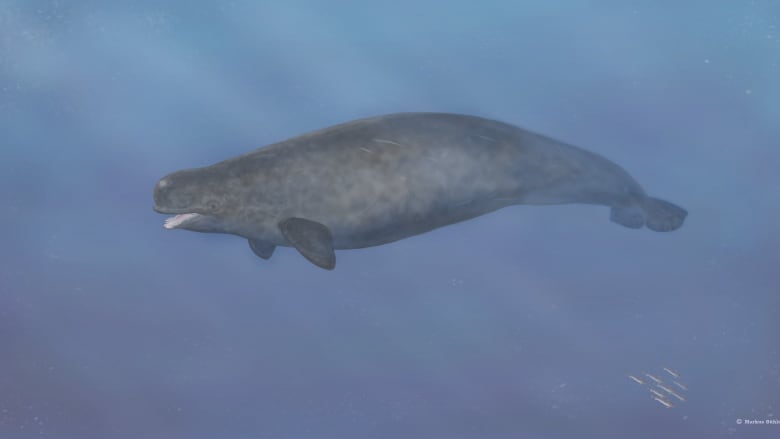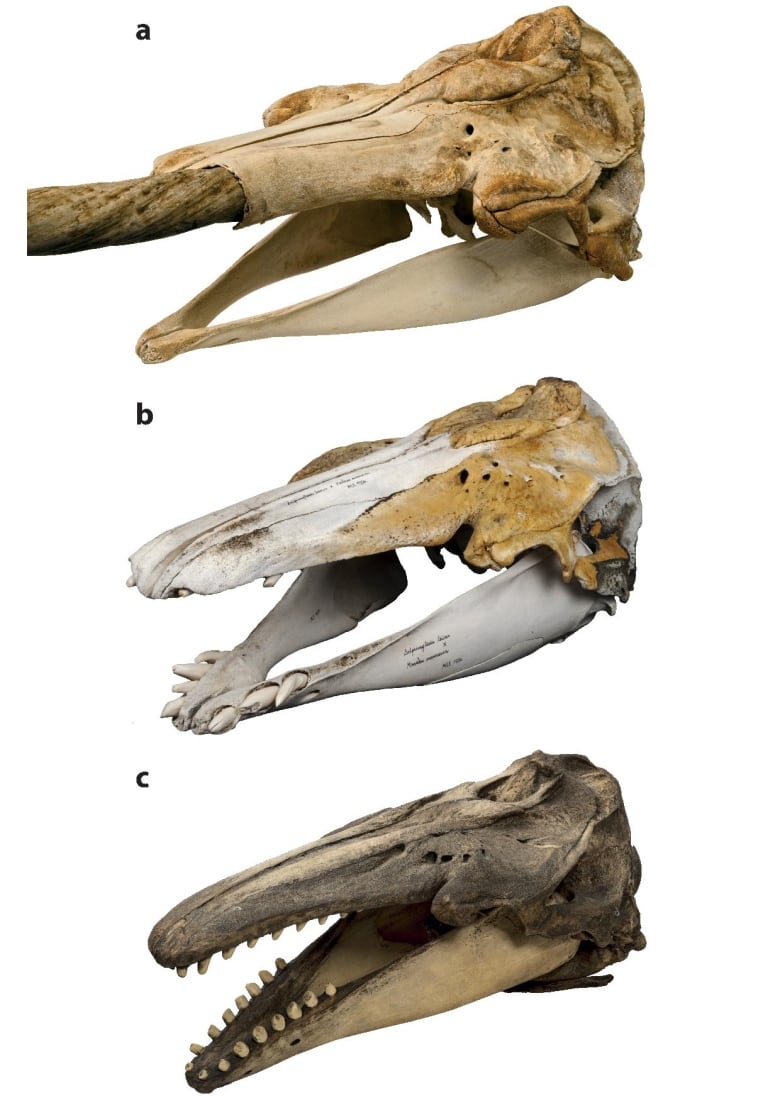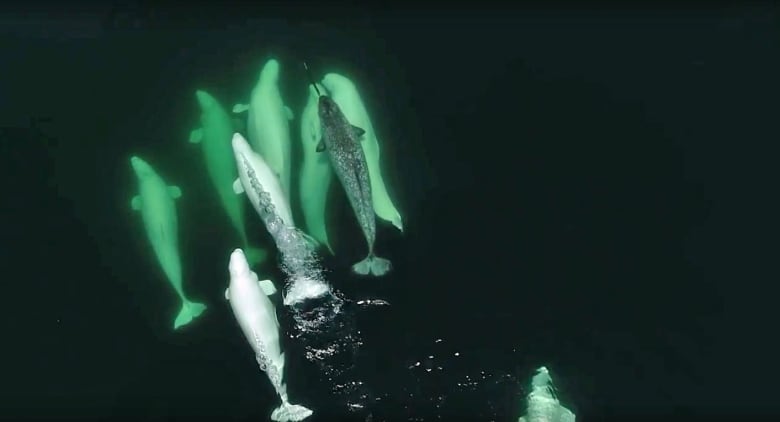Bizarre skull belongs to first known beluga-narwhal hybrid

Modern DNA technology has confirmed a strange-looking whale skull with weird, twisted teeth collected by a hunter decades ago belongs to the offspring of a narwhal mother and beluga father.
While narwhals and belugas are related species, have ranges that overlap in parts of the Arctic, and a narwhal has even been spotted frolicking with a band of belugas in the St. Lawrence River, this is the first time scientists have confirmed narwhals and belugas can interbreed.
“This is the only skull ever seen of this kind,” said Mikkel Skovrind, lead author of the new paper describing the animal. He said that’s a surprise, given both species are widely harvested by Indigenous people from Alaska to Canada to Greenland.
The strange skull, which belonged to an adult, was collected in 1990 in Disko Bay, West Greenland, by a subsistence hunter. At that time, two similar-looking whales were seen with it, described as being evenly grey all over, unlike belugas, which are white, and narwhals, which are mottled grey. Their front flippers were shaped like those of belugas and their tail was like that of a narwhal. All three whales were killed, but the skull was recovered from only one.
A 1993 study suggested the animal could be a hybrid, but DNA techniques at the time couldn’t confirm it.

The skull found its way to the collection of the Natural History Museum of Denmark, where Skovrind spotted it near the beginning of his PhD at the University of Copenhagen. He was captivated.
“It just looks really weird,” Skovrind recalled in a phone interview.
In particular, its 10 or so long, twisted teeth are very different from the teeth of either belugas — which have dozens of short, peg like teeth — and narwhals, which typically have no visible teeth except for the long tusk in males (and occasionally females.)
Immediately, Skovrind wanted to study it.
Working with his supervisor, Eline Lorenzen, and her lab and using modern DNA techniques typically used to analyze DNA from ancient hominin fossils, the researchers uncovered a lot of information about the whale.
They learned it was full grown and had one beluga parent and one narwhal parent. By looking specifically at its mitochondrial DNA, which is inherited from the mother, the researchers can tell that she was the narwhal.
Why it’s a surprise
While many kinds of whale hybrids had been found, researchers were surprised to find a narwhal-beluga hybrid.
For one thing, the two species aren’t that closely related — the last time they shared a common ancestor was five million years ago — around the last time humans shared a common ancestor with chimpanzees.
So to have the offspring of a beluga and narwhal reach adulthood is “quite amazing,” Skovrind said.
It’s also surprising because both species are intelligent and social, so females are likely choosy about their mates, Skovrind said.
“It’s quite weird that you see a beluga being allowed to mate with a narwhal female, when you look at how different a beluga male is from a narwhal male.”

That said, researchers in Quebec report that lost male narwhal appears to have been fully accepted by a group of belugas in the St. Lawrence River, leading to speculation more hybrids will be seen in the future.
Skovrind said he’s been in touch with the researchers there: “We agreed if a baby pops up, we’ll get a sample.”
Different diet
The differences between belugas and narwhals extend to their diets — belugas usually eat fish around 500 metres below the surface, while narwhals dive deeper to eat fish and squid about 800 metres below the surface. So the researchers were curious about what the hybrid ate.

It just so happened that Canadian researcher Paul Szpak, who specializes in that kind of analysis, was visiting the Natural History Museum of Denmark in the fall of 2017. He wanted to use the museum’s large collection of polar bear penis bone for a study on how the bears’ diets may have evolved in the past 5,000 years, recalled Szpak, an assistant professor of anthropology at Trent University in Peterborough, Ont.
He got talking to Lorenzen, and she suggested he help analyze the whale skull.
Szpak analyzed chemical isotopes in the bones that are influenced by diet, and found the hybrid didn’t feed like either of its parents — it dove right to the ocean floor, where it may have been eating animals like shrimp or squid, he suggests.
Szpak acknowledged that could be because of its weird teeth: “It can’t quite feed the way either parent species does.”
He also noted hybrids are sometimes larger than either parent species, and that appeared to be the case for this hybrid.
“Bigger animals are better at diving,” he said, and the hybrid may have taken advantage of that.
The researchers published their findings in the journal Scientific Reports Thursday.
Both Szpak and Skovrind say the study shows how important it is for museums to collect bones and other natural history artifacts over time, as they preserve valuable scientific information that could be unlocked by new technologies in the future, as happened in this case.
“We can use these new techniques to get new information that we definitely couldn’t have gotten from these specimens when they were collected,” Szpak said.
Related stories from around the North:
Canada: Narwhals have survived 1 million years despite low genetic diversity: study, CBC News
Finland: Report lists hundreds more species as endangered in Finland, Yle News
Iceland: Scientists puzzled by right whale’s appearance off Iceland, CBC News
Norway: Icelandic whale sanctuary can’t offer safe haven to beluga freed from harness, Radio Canada International
United States: In death, beached humpack whale offers clues, research samples, food, Alaska Public Media



